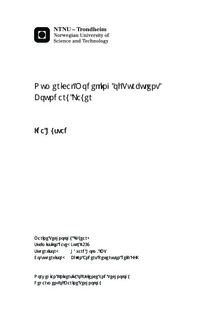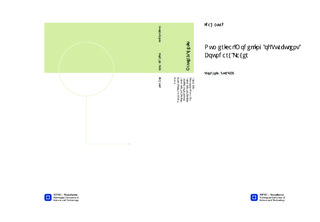| dc.contributor.advisor | Holm, Håvard | nb_NO |
| dc.contributor.advisor | Reif, Bjørn Anders Pettersson | nb_NO |
| dc.contributor.author | Hystad, Ida | nb_NO |
| dc.date.accessioned | 2014-12-19T12:12:57Z | |
| dc.date.available | 2014-12-19T12:12:57Z | |
| dc.date.created | 2014-09-13 | nb_NO |
| dc.date.issued | 2014 | nb_NO |
| dc.identifier | 746630 | nb_NO |
| dc.identifier | ntnudaim:11132 | nb_NO |
| dc.identifier.uri | http://hdl.handle.net/11250/239167 | |
| dc.description.abstract | Most physical problems involving viscous fluid flows are characterized by turbulence where instabilities and large velocity gradients generate fluctuations in the flow field. Towed sonar arrays are exposed to turbulence in the boundary layer formed around the cable. Problems are related to the cable rotating around its own axis due to variations in tension force caused by the towing vehicle. Numerical calculations of a pressure driven flow along a cylinder are performed for the purpose of investigating the turbulent boundary layer around the cable. In this study, the numerical software OpenFOAM has been used in order to solve the flow field. The Reynolds Average Navier-Stokes (RANS) approach was applied, providing a time-average solution of the flow quantities. The results were used in a comparative study with data obtained from Large Eddy Simulation (LES). Simulations were carried out for two Reynolds numbers based on the shear velocity; Re_tau=[240,550]. The cylinder was assigned two different rotational velocities in addition to a case with zero rotation. Results show that the normalized mean velocity profile is in good agreement with the universal law-of-the-wall and previous published data. Comparison with LES data indicated good agreement with Reynolds shear stresses and the normalized mean velocities in the case of a non-rotating cylinder. However, deviations were observed when rotation was applied. In order to ensure the quality of the numerical results a convergence study was performed. Special attention was paid to the near-wall region in order to capture all levels of the boundary layer. | nb_NO |
| dc.language | eng | nb_NO |
| dc.publisher | Institutt for marin teknikk | nb_NO |
| dc.title | Numerical Modelling of Turbulent Boundary Layer | nb_NO |
| dc.type | Master thesis | nb_NO |
| dc.source.pagenumber | 74 | nb_NO |
| dc.contributor.department | Norges teknisk-naturvitenskapelige universitet, Fakultet for ingeniørvitenskap og teknologi, Institutt for marin teknikk | nb_NO |

